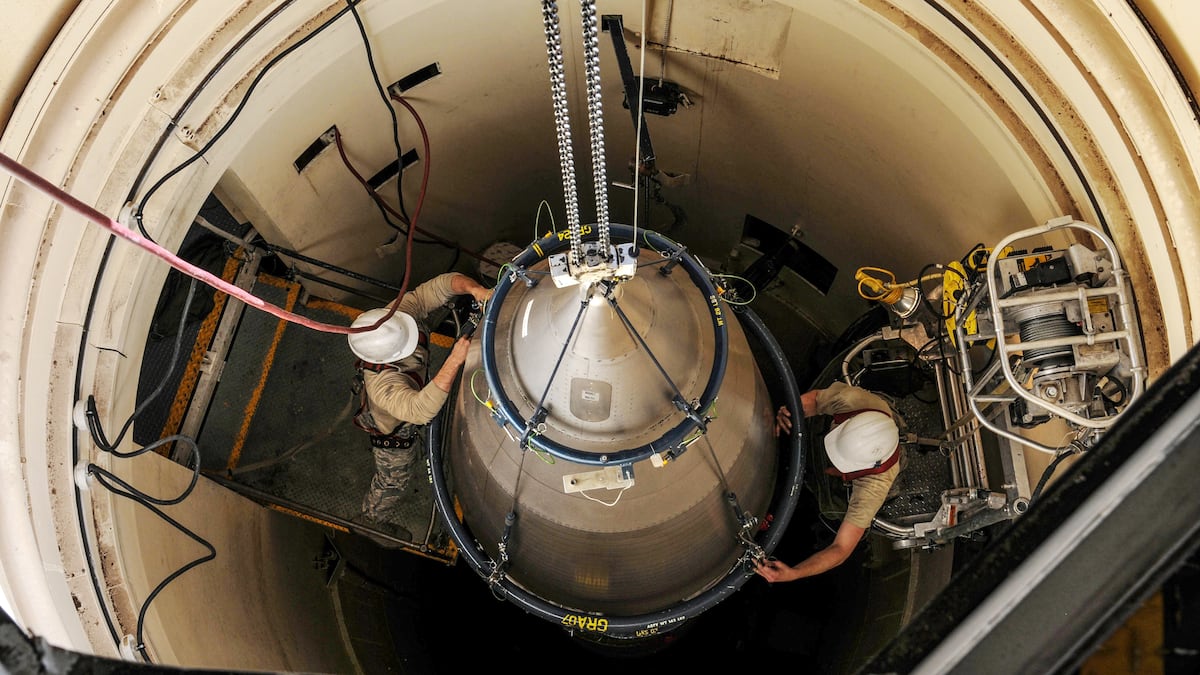The Air Force will have to dig entirely new nuclear missile silos for the LGM-35A Sentinel, creating another complication for a troubled program that is already facing future cost and schedule overruns.
The Air Force originally hoped the existing silos that have housed Minuteman III intercontinental ballistic missiles could be adapted to launch Sentinel missiles, which would be more efficient than digging entirely new silos.
But a test project at Vandenberg Space Force Base in California showed that approach would be fraught with further problems and cause the program to run even further behind and over budget, the service said.
“As the [Sentinel] program continues to undergo restructuring activities, the Air Force analysis continues to confirm unacceptable risks to cost, schedule and weapon system performance stemming from the original baseline strategy of converting Minuteman III silos,” an Air Force spokesperson said in an email Tuesday. “Additionally, we have data based on a test launch facility conversion project at Vandenberg Space Force Base that validated the implications of unknown site conditions with significant cost and schedule growth.
“To mitigate this and other risks, the Air Force plans to build new missile silos on predominantly Air Force-owned real estate, which means reusing the existing missile sites but not the 55-year-old silos,” the spokesperson continued.
Sentinel is the Air Force’s program to replace the existing Minuteman III ICBMs — the United States’ land-based portion of its nuclear deterrent — which are more than half a century old and reaching the end of their lives.
But Sentinel, which is being built by Northrop Grumman, will be a massive modernization, involving construction projects spread out across thousands of miles in the Great Plains region. It was originally expected to cost $77.7 billion, but projected future costs ran so severely over budget that in January 2024, it triggered a review process known as a critical Nunn-McCurdy breach.
After that review, the Pentagon last year concluded Sentinel was too critical to national security to abandon, but ordered the Air Force to restructure it to bring its costs under control. And further studies of the program are showing more potential problems.
In a briefing with reporters in March 2024, discussing the Nunn-McCurdy breach and the program’s complications, a Northrop Grumman official acknowledged that further study of the conditions of the existing silos may force the program to dig new ones.
“There’s currently no plan to dig new holes,” the official said. “But given the site conditions of the land, [there is] certainly the potential that when they get to investigating more of the silos, they may find that [reusing] some of them might not be possible.”
Gen. Thomas Bussiere, head of Air Force Global Strike Command, said in a virtual forum last week that the service is still studying the Sentinel program’s structure and finding ways to improve it.
“Nunn-McCurdy was a very stressful process for the department,” Bussiere said in an April 30 virtual forum, hosted by the Advanced Nuclear Weapons Alliance Deterrence Center. “But what it did is it gives us the opportunity to revisit and open up the aperture for how those facilities are being designed, and how those facilities are going to be implemented with the new capability.”
After the review, Bussiere said, the Air Force began looking at ways to reuse the existing land with Minuteman silos, if not the silos themselves. The service is also looking at other land already owned by the federal government to supplement its ICBM sites, he said.
But as the service transitions from the older analog command-and-control architecture to Sentinel’s new, digital-era control functions, Bussiere said, it will have to ensure it maintains a minimum number of ICBMs on alert to preserve the nation’s nuclear deterrent.
And considering the scale of this project could surpass even the Eisenhower administration’s construction of the interstate highway system, Bussiere said, that will be a complicated balance to strike.
“That’s going to be a graceful ballet between [operations] and maintenance, acquisition, a bunch of partners that are part of this program, to make sure we get this right. Quite frankly, we’ve never done it before, at this scale and complexity.”
Stephen Losey is the air warfare reporter for Defense News. He previously covered leadership and personnel issues at Air Force Times, and the Pentagon, special operations and air warfare at Military.com. He has traveled to the Middle East to cover U.S. Air Force operations.
Read the full article here


